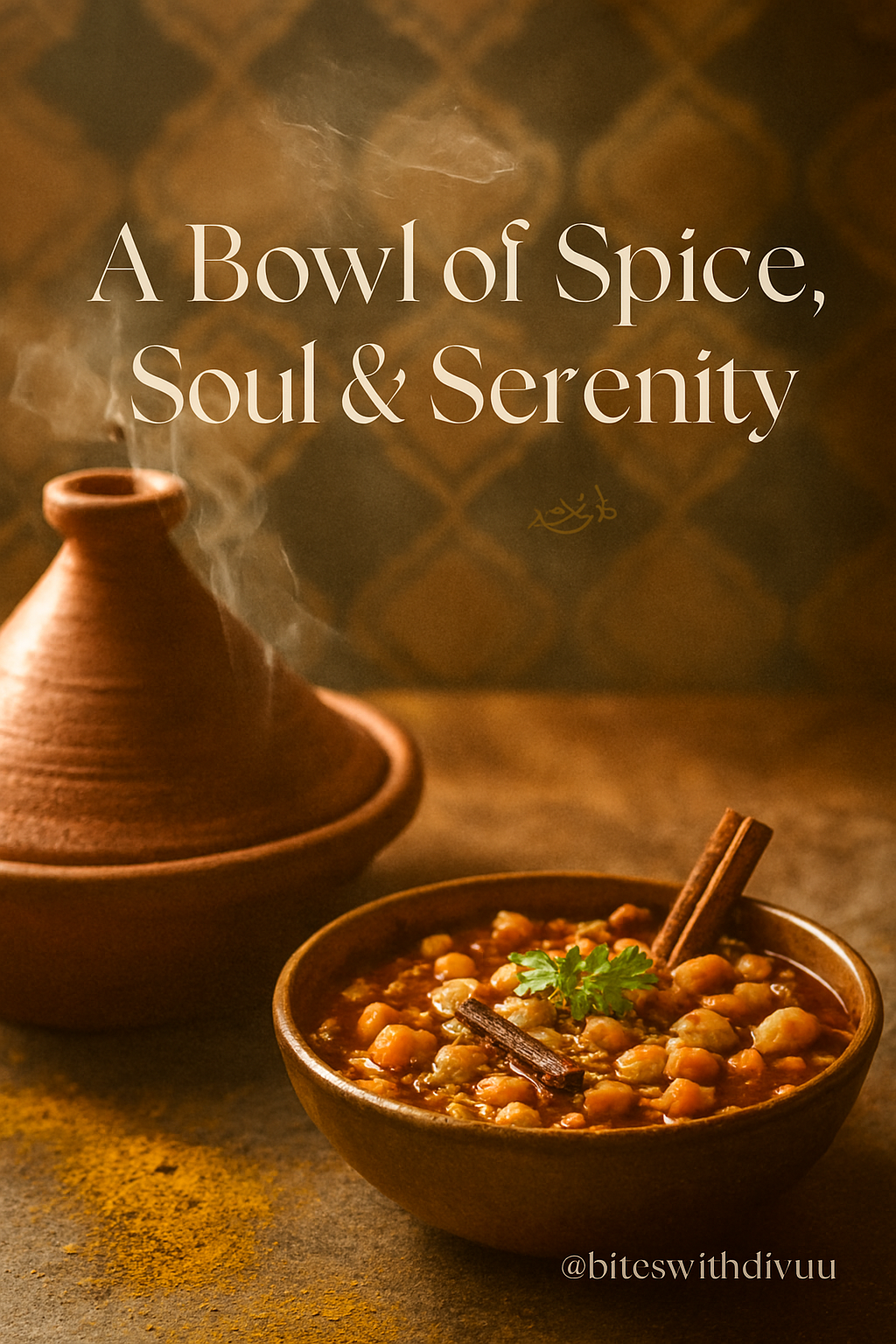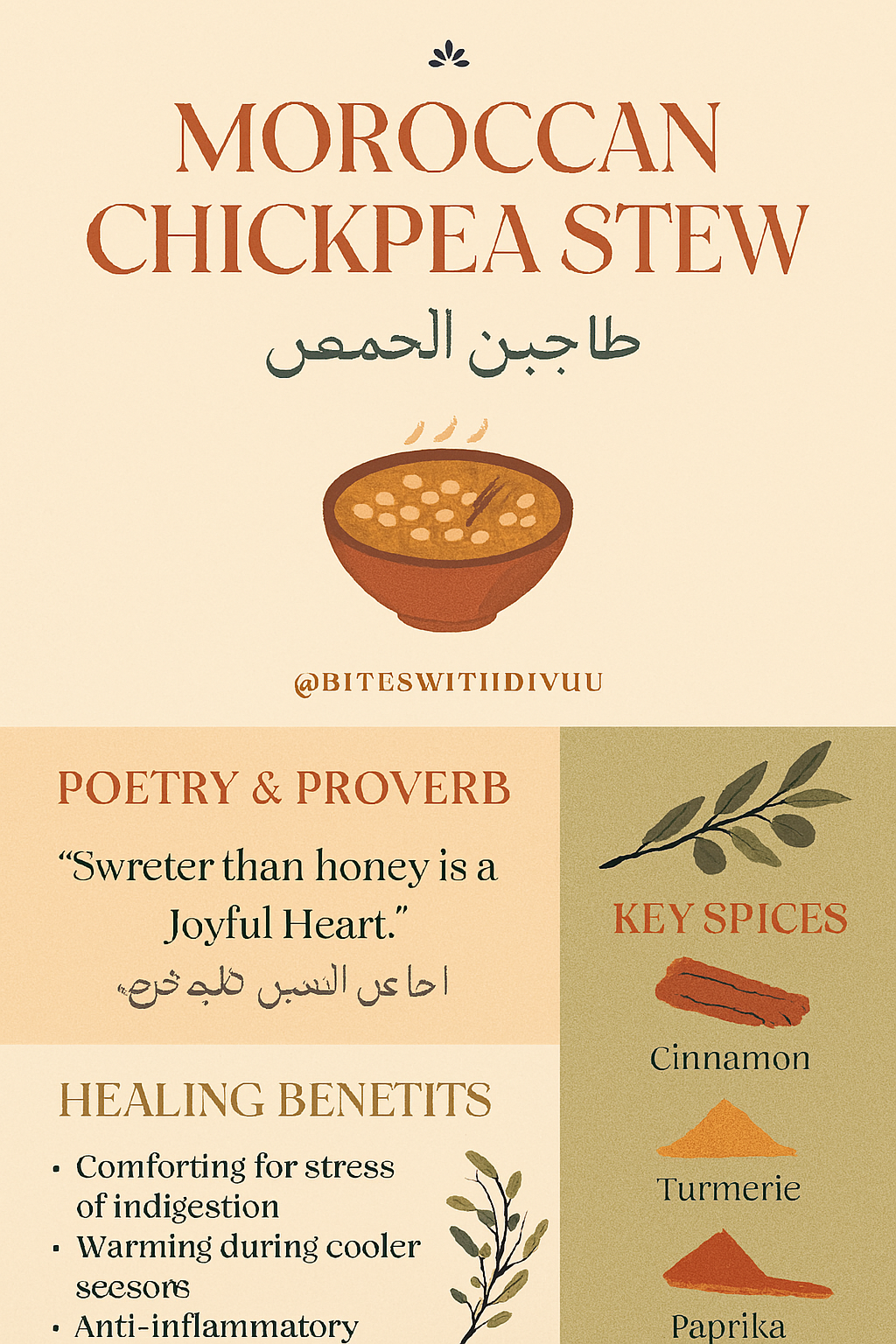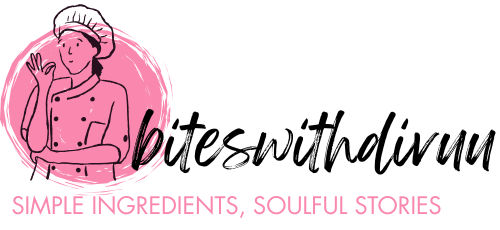
Discover the healing comfort of Moroccan Chickpea Stew, a vegan recipe rich in spices, fiber, and tradition. Includes restaurants in India and worldwide.
“Some stews don’t just simmer—they sing stories of desert winds, ancient spice routes, and quiet healing.”
In the golden kitchens of Morocco, where tagines bubble and mint tea steams, food is more than sustenance—it’s a ritual, a memory, a medicine. Among the many soulful dishes of this North African land, Moroccan Chickpea Stew (طاجين الحمص) stands out as a bowl of comfort, warmth, and healing.
This vegan delight, simmered with cinnamon, cumin, turmeric, and tomatoes, is a celebration of Morocco’s spice heritage and its deep connection to slow, intentional cooking. Whether served in a clay pot or ladled over couscous, it nourishes both body and spirit.
🌍 The Soul of Moroccan Cuisine
Moroccan food is a fusion of Berber, Arab, Andalusian, and Mediterranean influences. It’s known for:
- Layered spices that heal and awaken
- Slow cooking that deepens flavor and intention
- Communal eating that fosters connection
“الطعام الجيد يجمع الناس مثل الحب.” “Good food brings people together like love.” — Moroccan proverb
From bustling souks to quiet riads, every meal is a story. And chickpea stew is one of its most comforting chapters.
🧄 Healing in Every Spoon
This dish isn’t just delicious—it’s therapeutic. Here’s why it belongs in our Healing Foods corner:
- Chickpeas – High in fiber, protein, and gut-friendly nutrients
- Cinnamon & turmeric – Anti-inflammatory and grounding
- Cumin & garlic – Aid digestion and balance Vata
- Olive oil – Heart-healthy and soothing
- Tomatoes – Rich in antioxidants and lycopene
“In Morocco, every spice is a healer, every stew a story.”
🥘 Moroccan Chickpea Stew Recipe (طاجين الحمص)
📝 Ingredients:
- 1 tbsp olive oil
- 1 onion, finely chopped
- 3 garlic cloves, minced
- 1 tsp ground cumin
- ½ tsp cinnamon
- ½ tsp turmeric
- 1 cup cooked chickpeas (or canned)
- 2 ripe tomatoes, chopped
- 1 cup vegetable broth or water
- Salt to taste
- Fresh coriander or parsley for garnish
- Optional: lemon zest, chili flakes, or preserved lemon
👩🍳 Method:
- Heat olive oil in a clay pot or deep pan.
- Add onions and garlic, sauté until golden and fragrant.
- Stir in cumin, cinnamon, and turmeric. Let the spices bloom.
- Add tomatoes and cook until soft.
- Add chickpeas and broth. Simmer for 30–40 minutes until thick and aromatic.
- Garnish with fresh herbs and serve warm with couscous, millet, or flatbread.

🧘♀️ Mindful Eating Ritual
Moroccan meals are slow, intentional, and shared. Here’s how to eat this stew mindfully:
- Savor the aroma before the first bite
- Eat slowly, letting the warmth settle in
- Pair with mint tea for digestion
- Reflect on comfort—this dish is a reminder that healing can be delicious
“من يأكل وحده يموت وحده.” “He who eats alone dies alone.” — Berber saying
🧬 Ayurvedic Lens on Moroccan Chickpea Stew
Surprisingly, this North African dish aligns beautifully with Ayurvedic principles:
- Cumin, turmeric, cinnamon – Balance Vata and Kapha
- Olive oil – Enhances Ojas (vital energy)
- Chickpeas – Grounding and sattvic
- Slow cooking – Supports digestion and emotional calm
“Healing isn’t just in tradition—it’s in adaptation.”
Vegetarian Variations
Want to personalize the stew? Try these soulful twists:
- Add sweet potatoes for grounding sweetness
- Stir in spinach or kale for iron and chlorophyll
- Use millet or brown rice instead of couscous
- Add preserved lemon for a tangy probiotic kick
🕌 The Tagine Tradition: Cooking with Clay and Intention
In Morocco, stews like this one are traditionally cooked in a tagine—a clay pot with a conical lid that traps steam and infuses flavor slowly.
- Tagines symbolize patience and ritual
- Clay cooking enhances nutrient retention
- The shape allows spices to bloom gently
“A tagine doesn’t rush—it remembers.”
🧂 Spice Stories: The Moroccan Masala
Just like Indian masalas, Moroccan spice blends are layered and intentional. The most iconic is Ras el Hanout, which means “head of the shop”—a custom blend of the best spices.
Typical ingredients:
- Cinnamon
- Cumin
- Coriander
- Paprika
- Nutmeg
- Dried rose petals
“Spices in Morocco are not just flavor—they’re memory, medicine, and magic.”
🧵 Culinary Crossroads: Morocco Meets India
Draw parallels between Moroccan and Indian traditions:
- Cumin, turmeric, cinnamon are shared healing spices
- Clay pots (tagine vs. handi) reflect slow cooking
- Mint tea vs. tulsi chai as digestive rituals
- Chickpeas in chole vs. chickpeas in tagine—same soul, different spice
“Across continents, comfort speaks the same language.”
🧒 Family-Friendly Adaptations
Make the Moroccan Chickpea Stew suitable for all ages:
- For toddlers: Blend stew slightly, serve with soft rice
- For elders: Add ghee, reduce spice, serve warm with soup
- For busy parents: Make a big batch and freeze portions
🧘♀️ Emotional Healing Through Food
This moroccan chickpea stew is ideal for:
- Post-travel recovery
- Menstrual comfort meals
- Stressful work weeks
- Seasonal transitions
“Warm food grounds us when life feels scattered.”
🧾 Nutritional Breakdown (Per Serving)
- Calories: 320
- Protein: 14g
- Fiber: 10g
- Iron: 20% RDA
- Healthy fats from olive oil
- Antioxidants from tomatoes and turmeric
🛒 Moroccan Pantry Starter Kit
Ingredient Healing Benefit Chickpeas Gut health, protein Olive oil Heart health Cumin Digestion Cinnamon Blood sugar balance Turmeric Anti-inflammatory Ras el Hanout Flavor + warmth Preserved lemon Probiotic + tang 📚 Moroccan Food in Literature & Film
- The Caliph’s House by Tahir Shah – memoir with food rituals
- A House in Fez by Suzanna Clarke – Moroccan hospitality
- Chefchaouen scenes in travel films showing tagines and mint tea
“Food in Morocco is not just eaten—it’s written, filmed, and remembered.”
🌐 Cooking Classes & Experiences
For readers who want to learn hands-on:
- Airbnb Experiences – Moroccan cooking classes in Marrakech
- Online workshops – Tagine cooking via Udemy or Skillshare
- Instagram Lives – Chefs like @moroccanfoodie share real-time demos.
🛍️ Where to Find Moroccan Chickpea Stew in India
Though Moroccan cuisine is rare in India, here are a few soulful spots to explore:
🕌 New Delhi
Kaaya Café – Moroccan-Indian fusion with chickpea tagines
MOSAIC – The Med Kitchen – Offers Moroccan platters and mint tea
🕌 Mumbai
Souk at Taj Mahal Palace – Fine dining Moroccan with authentic tagines
Bayroute – Mediterranean-Moroccan fusion with vegan options
🕌 Bangalore
Sultans of Spice – North African-inspired menu with chickpea dishes
Mezze – Offers Moroccan-style mezze platters and stews.
🌍 Moroccan Restaurants Worldwide
Vancouver • Moltaqa – Authentic Moroccan with vegan tagines
San Diego • Medina – Moroccan-Baja fusion with chickpea bowls
San Francisco • Aziza – Modern Moroccan fine dining
Paris • Le Sirocco – Traditional Moroccan with mint tea rituals
Mexico City • Kous Kous – Moroccan street food with chickpea stews
London • Momo – Elegant Moroccan with couscous and tagines.
📬 Stay Connected with @biteswithdivuu
Love soulful bowls like this? Let’s keep the healing food journey alive.
- 💌 Subscribe for weekly millet fusions and global comfort foods
- 📸 Follow @biteswithdivuu for food stories and visuals
- 💬 Comment below: What’s your comfort food ritual?
“Food is not just fuel—it’s connection, culture, and creativity.”
🧭 What’s Next on Our Healing Food Journey?
If Moroccan Chickpea Stew warmed your soul, stay tuned for our next bowl of comfort from a different corner of the world. We’ll explore:
- Korean Kimchi Jjigae – Fermented fire and gut healing
- Ethiopian Misir Wot – Lentil stew with spice and spirit
- Japanese Miso Soup – Umami, balance, and quiet nourishment
“Across cultures, comfort food speaks the language of healing.”
